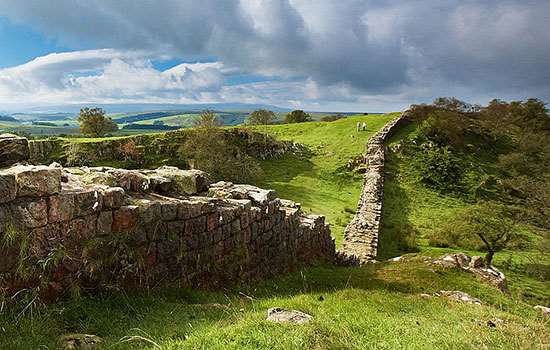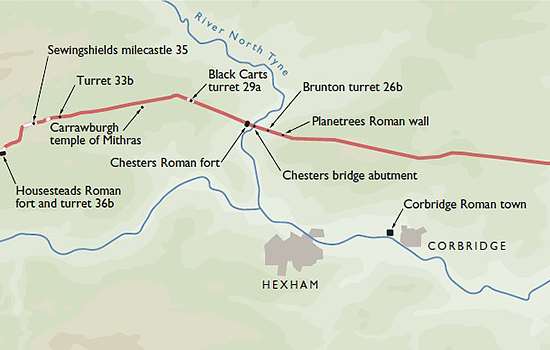Significance of Hadrian’s Wall
Hadrian’s Wall is the most visible and best-known land frontier of the Roman empire, with parts of it visible through many miles. The most important and substantial of Roman remains in Britain, it is also one of the most dramatic features of the landscape of northern England.

Roman Frontier
For almost 300 years, Hadrian’s Wall was the north-west frontier of an empire that stretched east for 2,500 miles to present-day Iraq, and south for 1,500 miles to the Sahara desert. It differs in several respects from the other frontiers of the empire:
- It is the only Roman frontier built largely in stone, of which there was an abundant supply locally.
- Uniquely, the forts are built astride the frontier, rather than attached to one side or placed nearby.
- Together with the Antonine Wall, it is the only frontier where all the elements are linked – in Germany and North Africa, the towers, for example, are separate in the landscape. The fact that many of the various elements of the Wall are linked to each other makes it possible to establish a building sequence, which is not possible on the frontiers of continental Europe.
- The Wall was already famous in its own day. Enterprising Romans created their own souvenirs of the frontier in the form of small pans, some of them bearing the names of forts on the line of the Wall and what appears to be a depiction of the Wall itself. Such souvenirs are not known on any other Roman frontier.
Archaeological Resource
Although only a fraction of it has been excavated, the Wall is one of the most explored frontiers of the empire, and a substantial body of archaeological material is now available for further study. Research, including survey, geophysics and excavation, has shown that the Wall contains a wealth of material which can contribute to an understanding of its function and development, environment and material culture.
As new discoveries are made on the Wall, more and more is revealed about the Roman empire. Not least, Hadrian’s Wall demonstrates the ability of the Romans to protect their empire, as well as their engineering and buildings skills.
World Heritage Site
Hadrian’s Wall was made a World Heritage Site in 1987 in recognition of its historical and cultural importance. In 2005 it became part of the trans-national Frontiers of the Roman Empire World Heritage Site which also includes sites in Germany.
Landscape and Culture
When the Wall was abandoned, its decaying remains served as a ready quarry or castles, churches and farms along its line. As a strong feature in the landscape, it was used to define parishes and estates. In time, it also attracted the attention of painters, photographers, poets and novelists as well as archaeologists and historians. Its fame remains a draw for tourists from across the world.







